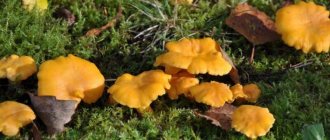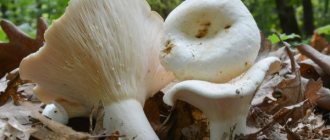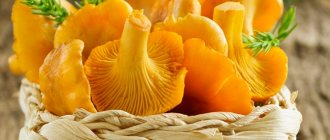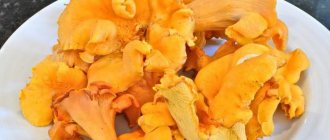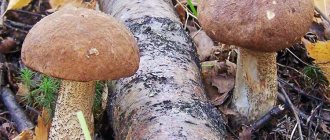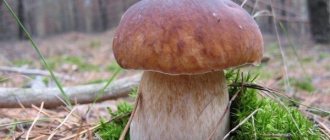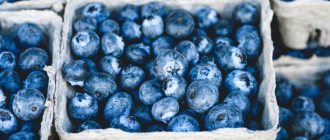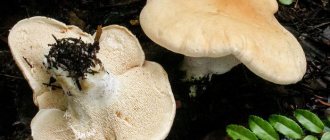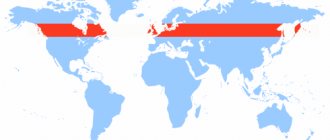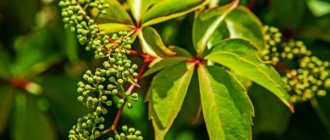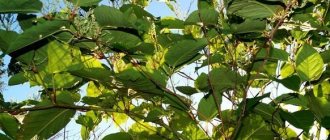Description
The scientific name of the black fox is Craterellus cornucopioides.
. This mushroom belongs to the Chanterelle family and differs from its other representatives in the dark color of the fruiting body.
The pulp of the funnel-shaped funnel contains a special substance, chitinmannose, that is poisonous to insects and parasites.
That is why this species is almost never affected by worms. The black fox has the following characteristic features:
- The height of the fruiting body of the mushroom is 10–12 cm.
- The hat in appearance resembles a funnel with a diameter of 3–5 cm, the edges of which are folded outward.
- The surface of the mushroom is covered with small tubercles and wrinkles. It is colored light gray, and as it ripens it becomes gray.
- The inside of the cap is gray (sometimes with a brown tint).
- The black chanterelle does not have pseudoplates and other folded formations characteristic of other types of mushrooms. The spores are white or yellow in color.
- The stem of the mushroom is short and hollow inside, it tapers towards the top, reaching a diameter of 0.8 cm. The color of the stem is predominantly dark gray, less often brown.
- The thin pulp of the mushroom has a delicate structure. It is grayish in color, has a pleasant mushroom taste and exudes a light aroma.
Growing at home and in the country
The black fox is a rare guest in gardens and dachas, but if you create the necessary conditions for it, it is quite possible to get a good, high harvest from your plot.
The best “partners” of the funnel mushroom are pine and spruce; the fungus can grow under oak, beech and some other types of trees. Attempts to “make friends” of wild mushrooms with garden trees are doomed to failure.
To successfully grow black chanterelles, the best option would be to dig up a small tree with funnel fungus mycelium in the forest. It is usually located at a distance of 15–20 cm from the surface. It is very important not to destroy this part when digging. Collect a couple of bags of topsoil and some pine litter from the forest to create suitable conditions for growing mushrooms.
Plant the tree in a semi-shaded area and water moderately. There is no need to fertilize the mycelium; it receives nutrients from the tree.
There is another way to grow funnelweed - with the help of spores. To do this, select the caps of overripe mushrooms and scatter them under the tree, moisten them well with water and constantly monitor the humidity level, since drying out the soil can lead to the death of the mycelium.
Another way to grow chanterelles is to use commercial mycelium. It can be purchased in specialized stores; the price of the material is not very high.
Planting time can last from June to October. If everything goes well, the first mushrooms can be obtained already at the beginning of summer next year.
Other names
The black fox has many names.
In Russia and other countries this mushroom is called as follows:
- craterellus carotid;
- black horn (in Finland);
- horn-shaped fungus;
- funnel-shaped funnel;
- cornucopia (in the UK);
- trumpet of death (in France);
- funnel-shaped funnel;
- trumpet of the dead (in Germany).
Important! Black chanterelles cannot be frozen raw or boiled, because then they will become bitter and tasteless.
What are the differences between edible and inedible chanterelles?
There are several main factors that will help distinguish an edible chanterelle from an inedible one:
- Dangerous varieties have a brighter shade and smooth edges. Edible species have a calm reddish color and ragged edges at the top.
- A pleasant aroma is a sign of edibility.
- If the thick stem smoothly turns into a cap, this mushroom can be eaten.
- Inedible varieties have a thin and hollow stem.
- Edible species grow in colonies, while dangerous species grow alone.
- False chanterelles are easy to peel. Edible ones are difficult to clean.
Where do black chanterelles grow?
In its natural environment, the funnel-shaped funnel can be found in Europe, Asia, Japan, Russia or North America. It usually grows in groups of 4 or more mushrooms. The color of the cap often blends in with the grass and leaves, so it is quite difficult to notice the chanterelles.
Most often, the funnel-shaped funnelwort can grow in the following places:
- deciduous and mixed forest with moist soil;
- in open, sunny meadows and forest edges;
- on the sides of roads and paths;
- on mountain plains;
- at the edge of ditches;
- at the foot of oaks and beeches.
Time and place of fruiting
The horny fungus prefers moist soil. Places where black chanterelles grow can be found in mixed and deciduous forests. Grows under fallen oak or beech leaves, loves sunny meadows. Growth occurs in small groups.
Collection time is from July to late autumn. The black fox can be found in European, North American and Asian territories, including Japan. In Russia, it is found in the regions of the North Caucasus, Altai and the Far East, the West Siberian Plain and in the European part of Belarus.
How to distinguish from similar species
There are several varieties of mushrooms that look like black chanterelle (the similarities can be seen in the photo).
But at the same time, they have a number of characteristics that allow them to be distinguished from the funnel funnel-shaped:
- urnula goblet - its black cap in shape also resembles a very deep funnel, but it is denser and more rigid in structure, and also does not have a turned-up edge and is unsuitable for food;
- convoluted funnel - has a cap of a similar shape, but with more dissected edges, and the mushroom itself is colored yellowish;
- gray chanterelle - also dark-colored, but unlike the funnel-shaped funnel-shaped one, it has plates on the lower surface of the cap.
Pale fox
Photo 5. A pale variety of the common chanterelle. Author: zaca.
The colloquial name is white chanterelle . Genetically quite close to the previous mushroom, which gives rise to mycologists [2]
Mycology is the science that studies mushrooms. certain disagreements. A number of scientists consider it a subspecies of the common chanterelle, but some do not agree with this and distinguish it as an independent species.
It is very similar to a real fox in everything except its coloring - it is noticeably lighter. At the same time, the white chanterelle can be either with a slight yellowish tint or completely colorless - in fact, snow-white. The plates on the underside of the cap are usually cream-colored, but sometimes they are white.
Pale chanterelle grows in almost the same places as the common chanterelle, bears fruit at the same time, but mushroom pickers have long noticed that it is more often found precisely where deciduous trees predominate. In general, she is a rather rare guest in baskets.
Beneficial features
Black chanterelles contain vitamins A, B, D and PP necessary for the human body, as well as phosphorus, potassium and calcium.
- Thanks to this chemical composition, they have a number of useful properties:
- relieve spasms;
- improve the condition of the skin and nails;
- strengthen bones;
- stimulate metabolism;
- normalize night sleep;
- have a beneficial effect on brain function;
- normalize blood pressure;
- cleanse the body of toxins and parasites;
- strengthen the immune system.
We invite you to familiarize yourself with the features and techniques of growing champignon and oyster mushrooms.
False fox - description and photo
Novice mushroom pickers do not always ask themselves whether there are false chanterelles, and what danger they pose? Previously, this mushroom was classified as poisonous, but, according to recent research, it has been reclassified as conditionally edible. If used and prepared incorrectly, there is a possibility of getting poisoned by the false chanterelle's own poisons.
The false chanterelle looks very similar to the common one.
Compared to the true chanterelle, this mushroom is more saturated in color. Towards the edges the color intensity decreases compared to the middle. The hat is lightly velvety, its edges are rounded. In diameter, such a mushroom does not grow more than 6 cm. In a young plant, the cap has a convex shape, and by maturity it becomes funnel-shaped. The main distinguishing feature of the false chanterelle is that its flesh is yellow in color and has an unpleasant odor. It is practically tasteless and does not change color when heated or squeezed.
Contraindications and possible harm
Funnel fungus, like any other mushroom, can cause harm to the body. To avoid negative consequences, only young black chanterelles should be used as food, because old fruiting bodies can cause serious poisoning.
- In some cases, this mushroom is contraindicated for consumption:
- in case of individual intolerance to the product;
- at any stage of pregnancy;
- during lactation;
- children under 8 years of age.
Important! It is recommended to collect funnel-shaped funnelwort only in ecologically clean areas, away from factories and busy roads.
Use in cooking
In Europe, black chanterelles (mushrooms, photo below in the article) are considered a delicacy, but in our country only experienced mushroom pickers risk collecting black chanterelles. And not without reason, since the funnel-shaped funnel has a very pleasant taste.
After harvesting, wash the mushrooms thoroughly. This is not so easy to do, since leaves, sticks, particles of earth and sand can become clogged in the recess. Rinse the black chanterelles in several waters, removing any debris if possible. Next, you need to boil the mushrooms for 20-25 minutes. Be prepared for the mushroom broth to become very dark, almost black, and it is better to drain it from the chanterelles.
After boiling, black chanterelles can be cooked in the same way as regular mushrooms. Fry, add to soup and main courses. They are often consumed dried (when dried, the mushroom becomes lighter in color). Keep in mind that dried black chanterelles become even more fragile.
Culinary experts recommend grinding dry black chanterelles into powder and adding them to a variety of mushroom sauces, meat and fish cutlets, and vegetable dishes. Black chanterelles are said to impart a more pronounced mushroom flavor than porcini mushrooms. It is recommended to store such dried powder for no more than 1 year in a tightly closed fabric or canvas bag. Stable temperature, low humidity and avoidance of direct sunlight are also important for long-term storage of the product.
Use in medicine
Due to their numerous beneficial properties, black chanterelles are often used in folk medicine.
They are recommended to be consumed in case of the following disorders in the body:
- muscle cramps;
- frequent bone fractures;
- insomnia;
- hypertension;
- osteoporosis;
- inflammatory processes of tissues and joints;
- helminthiasis.
Did you know? Mushrooms grew on our planet even before dinosaurs appeared on it - more than 400 million years ago.
Nutritional quality
Black chanterelle belongs to category 4 edible mushrooms, and is considered a delicacy in European countries. At the same time, only the cap is eaten, because the leg has a tougher pulp.
The funnel beetle can be eaten without pre-processing, as well as boiled, fried or dried. In the latter case, the aroma of the mushroom is significantly enhanced, which makes it possible to use black chanterelles as a seasoning when preparing soups, sauces and main courses.
Velvety Chanterelle
She is the Frieza fox , the orange fox . It differs from the ordinary one in the smaller size of the fruiting bodies and in color, which is rather not yellow, but bright orange or orange-reddish. At the same time, some fruiting bodies may be evenly colored, while others may have a noticeably lighter inner side of the cap and stem.
Apparently, it forms mycorrhiza with several species of trees, but is found in a rather limited area - in southeastern Europe, in deciduous forests , on acidic soils. Rare everywhere. Fruits from July to October .
The taste is approximately the same as that of the yellow chanterelle, but they say it is slightly bitter.
How to cook black chanterelles
Various dishes can be prepared from the funnelwort, for example, the famous Leningrad solyanka. Before this, you need to remove the stem of the mushroom, rinse the cap well and clean it of adhering debris (grass, twigs and leaves). You can soak the product in water for several hours to completely remove all the dust from it.
Important! In their whole form, dried mushrooms retain their aroma longer, so it is recommended to grind them into powder immediately before preparing the dish.
Basic methods for preparing black chanterelles:
- to prepare mushroom pies and salads, pour the funnel with water, bring to a boil on the stove, and then cook for 10–15 minutes over medium heat;
- so that chanterelles can be added to other dishes or frozen in the freezer for the winter, it is necessary to cut the product into small pieces and fry it in oil with the addition of spices and seasonings for 5 minutes;
- black chanterelles can be dried - to do this, spread them in a thin layer on a baking sheet and place in an oven preheated to 100 ° C for 3 hours;
- To prepare the aromatic seasoning, dried mushrooms are ground into powder and then added to sauces, soups and main dishes.
Risotto is a traditional dish of Italian cuisine. Most often it is prepared with porcini mushrooms, but you can also prepare risotto with chanterelles. Very tasty, satisfying and aromatic
Despite its dark color, which is unusual for edible mushrooms, the funnel fungus can be used for preparing various dishes, as well as for the prevention of many diseases. Having studied the information presented above, you can easily distinguish this mushroom from other varieties of the Chanterelle family and learn how to properly use it in cooking.
Black chanterelle (horned funnel)
She is also the gray funnelweed (listed in the chanterelle family, but belongs to a slightly different genus - funnelworts). This mushroom should be given special attention, because in its taste it is superior to real chanterelles, and in some developed countries it is considered a delicacy - there it is put on a par with truffles and morels.
The shape of the horn-shaped funnel is more reminiscent of a pipe than a funnel - quite deep, right up to the mycelium, with edges turned outward, dark brown, almost black inside and gray-gray outside. Size - 3-8 cm in diameter, 5-12 cm in height. In young fruiting bodies, blackness is most pronounced.
It is very similar to the gray chanterelle, but has a very noticeable distinctive feature: on the underside of its cap there are no pronounced folds reminiscent of “standard” mushroom plates.
The funnel-shaped funnel is well camouflaged under fallen leaves - it is not so easy to find.
Widely distributed in the temperate zone and further south, from Europe to the Far East. It grows in those forests where there is oak , beech , hazel and spruce . It bears fruit from July to October, most abundantly from mid-August to mid-September , usually in friendly clusters. In southern latitudes, with warm, snowless winters, it can be found in forests until November.
What’s interesting is that there are two points of view about the nutritional pattern of this mushroom. In the post-Soviet space, the funnel funnel is recognized as a mycorrhiza-former, while Western mycologists consider it a saprophyte. It is likely that, depending on the area, this mushroom can feed in both ways.
